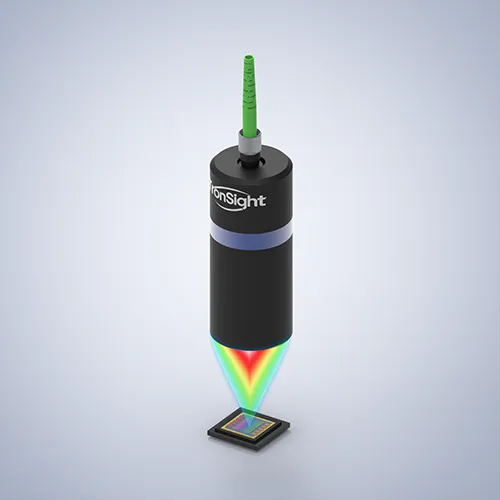3C01.CMOS Assembly Height Measurement
Jul 30, 2025
Why It Matters
In CMOS image sensor manufacturing, the precise alignment and height of individual components—such as lens holders, filters, and sensor chips—play a crucial role in ensuring image quality and performance. Inaccurate height or tilt during assembly can lead to focus drift, optical aberrations, or even sensor failure. Therefore, accurate non-contact height measurement is essential to maintain tight tolerances and improve production efficiency.
Common Measurement Methods
| Method | Contact/Non-contact | Accuracy | Suitability for CMOS Components | Limitations |
|---|---|---|---|---|
| Contact Probe | Contact | Moderate | Limited | May damage sensitive parts |
| Laser Displacement Sensor | Non-contact | High | Good | Affected by reflective materials |
| Chromatic Confocal Sensor | Non-contact | Very High | Excellent | Higher cost |
Measurement Principle & Procedure
Chromatic Confocal Displacement Sensors (like TS-C Series) utilize chromatic dispersion to determine height by detecting the focal wavelength of reflected light. Each wavelength focuses at a different height, and the peak signal corresponds to the surface position.
Steps:
-
Mount the CMOS unit on a precision platform.
-
Scan across target components (e.g., lens holder, sensor die).
-
Collect height data for multiple points.
-
Analyze parallelism and height difference to ensure assembly standards.
This method is ideal for micron-level control and real-time feedback in high-volume production lines.
TronSight’s Solution

TronSight’s TS-C series chromatic confocal sensors offer superior vertical resolution (up to 5 nm) and high sampling rates (up to 30 kHz), enabling accurate inspection of component heights, step profiles, and flatness in CMOS sensor modules.
Advantages:
-
Works with various transparent and reflective materials
-
Immune to ambient light interference
-
High precision for multilayer structures
Recommended Product
👉 TS-C Series Chromatic Confocal Displacement Sensor
Accurate, stable, and contactless measurement for semiconductor and optical applications.
Recent Posts

October 26, 2016
The Most Successful Engineering Contractor
.webp?x-oss-process=image/resize,w_100/quality,q_100)







